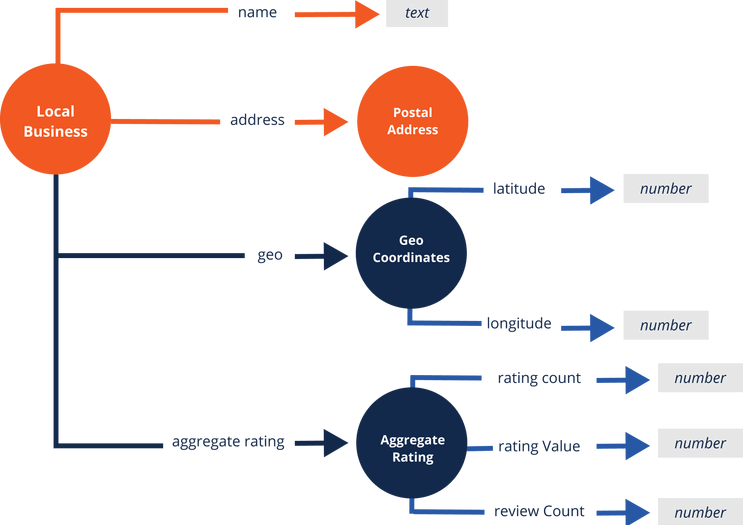Unlock the secrets of implementing Schema Markup for company corporations and boost your online presence with these proven strategies.

Image courtesy of via DALL-E 3
Table of Contents
Introduction to Schema Markup
In today’s digital world, where competition among businesses is fierce, it’s essential to make your company stand out online. One powerful tool that can help you achieve this is schema markup. In this section, we will introduce what schema markup is and why it’s crucial for company corporations like yours.
What is Schema Markup?
Let’s break it down into simple terms: schema markup is a code that you add to your website to help search engines understand the content on your page better. It’s like giving search engines a cheat sheet to accurately display your information in search results.
Why Do Companies Need it?
Companies need schema markup because it helps them stand out in search engine results. By using schema markup, your website can appear more prominently in search results, making it easier for potential customers to find you. This can lead to increased traffic to your site and ultimately more business for you.
Setting Up Schema Markup
Before you start setting up schema markup for your corporation, you need to gather some important information. This includes details about your company, such as the name, address, phone number, and business category. Also, think about what type of content you want to mark up, like products, events, or reviews. Having this information ready will make the setup process smoother.
Choose the Right Tool
There are different tools available to help you set up schema markup for your company. Some popular options include Google’s Structured Data Markup Helper and Schema.org’s markup generator. These tools are user-friendly and can guide you through the process step-by-step. Choose a tool that best suits your needs and follow their instructions to create your schema markup efficiently.
Implementing Schema Markup
Now that you have learned about what schema markup is and why it is important for companies, it’s time to dive into how you can actually implement it on your website. Implementing schema markup may seem like a daunting task, but with the right guidance, you can successfully enhance your online presence and stand out in search engine results.
Using Online Tools
One of the easiest ways to implement schema markup on your company’s website is by using online tools. These tools are designed to generate the necessary code for different types of schema markup, such as organization schema or product schema. All you need to do is input the relevant information about your business, and the tool will create the code for you to paste onto your website.
Manual Implementation
For those with a bit more technical know-how, you can choose to implement schema markup manually using HTML. This method involves adding specific markup code directly into your website’s source code. While this method may be more complex, it allows for greater customization and control over the markup you are adding to your site.
By following these step-by-step instructions, you can effectively implement schema markup on your company’s website and start reaping the benefits of improved search engine visibility and user engagement.
Testing Your Schema Markup
Once you have implemented schema markup on your company’s website, it’s essential to test it to ensure everything is working correctly. Google provides free tools that can help you verify if the markup is being recognized by search engines.

Image courtesy of www.schemaapp.com via Google Images
One such tool is the Google Structured Data Testing Tool. Simply enter your website URL, and the tool will analyze the markup on your page and provide feedback on any errors or suggestions for improvement.
Fixing Errors
If the testing tool identifies any errors in your schema markup, don’t worry! It’s common to encounter some issues initially. The tool will usually highlight the specific areas that need attention. You can then go back to your website’s code and make the necessary adjustments to fix the errors.
After making changes, you can retest your schema markup to ensure that all errors have been resolved. It’s crucial to address any issues promptly to ensure that your markup is accurately understood by search engines.
Common Types of Schema Markup for Corporations
Organization schema markup is a type of structured data that provides information about a company, such as its name, logo, contact information, and social media profiles. By implementing organization schema markup on your website, you can improve your visibility in search engine results and help search engines better understand your business.
Product Schema
Product schema markup is another valuable type of structured data for companies that sell products. This markup allows businesses to provide detailed information about their products, such as pricing, availability, and reviews. By using product schema markup, companies can enhance their search engine listings with rich snippets that display important product details, making it easier for potential customers to find and purchase their products online.
Best Practices for Schema Markup
When it comes to implementing schema markup for your company, following some best practices can help ensure that your markup is effective and error-free. Here are some general guidelines and tips to keep in mind:

Image courtesy of rankz.co via Google Images
Keep Information Updated
It’s crucial to keep your schema markup information updated to reflect any changes in your business. Whether it’s a new location, updated contact information, or new products or services, make sure your markup is always current. This not only helps search engines provide accurate information to users but also maintains the credibility and trustworthiness of your business.
Avoid Overstuffing
While it’s important to provide as much relevant information as possible through schema markup, it’s equally important to avoid overstuffing. Adding unnecessary markup can confuse search engines and lead to penalties for your website. Stick to the essential information that accurately describes your business, products, and services. Quality over quantity is key when it comes to schema markup.
Benefits of Schema Markup
Schema markup offers numerous advantages for businesses looking to enhance their online presence and boost their visibility in search results. By implementing schema markup on their websites, companies can experience direct benefits that contribute to their overall success.
Increased Visibility
One of the key benefits of schema markup is the increased visibility it provides for company websites. By structuring data in a way that search engines understand, schema markup helps businesses appear more prominently in search results. This enhanced visibility can lead to more organic traffic and greater brand exposure online.
Improved Click-Through Rates
Another advantage of utilizing schema markup is the potential for improved click-through rates. Rich snippets, which are enhanced search results that include additional information like reviews, ratings, and pricing, can make a company’s listing more attractive to users. As a result, having rich snippets can increase the likelihood of users clicking on the company’s website link, driving more traffic and potential customers.
Advanced Tips and Resources
Once you have grasped the basics of schema markup, it’s essential to keep yourself updated with the latest trends in the field. Search engines constantly evolve, and staying informed about new schema types or changes in implementation guidelines can give your company a competitive edge.

Image courtesy of jasonbarnard.com via Google Images
Useful Links and Tools
For those looking to delve deeper into schema markup, here are some valuable resources to aid you in your journey:
1. Schema.org: The official resource for schema markup, offering comprehensive documentation and examples.
2. Google’s Structured Data Testing Tool: A tool provided by Google to test and validate your schema markup implementation.
3. TechnicalSEO’s Schema Markup Generator: A user-friendly tool for generating schema markup without the need for coding.
By utilizing these resources, you can enhance your understanding of schema markup and optimize its implementation for your business.
Conclusion
In conclusion, schema markup is a powerful tool that can greatly benefit company corporations in their online presence. By implementing schema markup, businesses can enhance their visibility in search engine results, attract more visitors to their websites, and ultimately improve user engagement. It is essential for companies to take advantage of this tool to stay competitive in the digital landscape.
The Value of Schema Markup
Throughout this article, we have explored the definition of schema markup, why companies need it, how to set it up, implement it on company websites, test it for errors, common types of schema markup for corporations, best practices to follow, and the benefits it offers. Schema markup not only helps businesses stand out online but also enables them to provide users with relevant and accurate information, leading to increased click-through rates and improved search engine visibility.
Therefore, it is highly recommended that company corporations incorporate schema markup into their digital marketing strategies to achieve better results and drive success in the competitive online landscape. Stay updated with the latest trends in schema markup and make use of the available resources to ensure that your business thrives in the digital realm.
Frequently Asked Questions
What if I Make a Mistake?
If you happen to make a mistake in your schema markup, don’t worry! Mistakes can happen, but they can be fixed. The first step is to identify where the error is located. You can use Google’s Structured Data Testing Tool to pinpoint the issue. Once you have identified the mistake, you can make the necessary corrections to your markup. After making the changes, it’s crucial to test the schema markup again to ensure it is error-free.
How Often Should I Update It?
Keeping your schema markup up to date is essential for ensuring that your business information is accurate and relevant. It is recommended to review and update your schema markup whenever there are changes to your business, such as new products or services, updated contact information, or any other modifications. By maintaining current schema markup, you can provide users and search engines with the most up-to-date information about your company.







